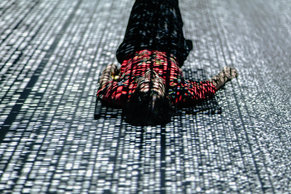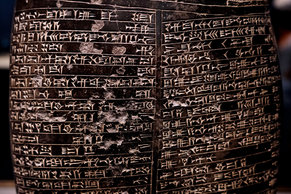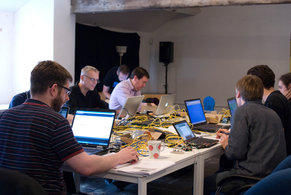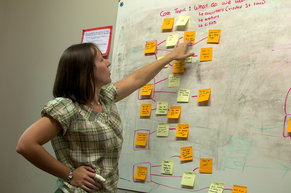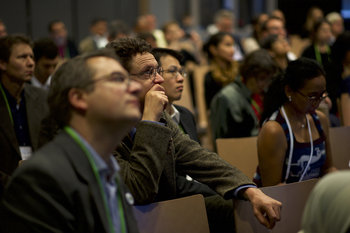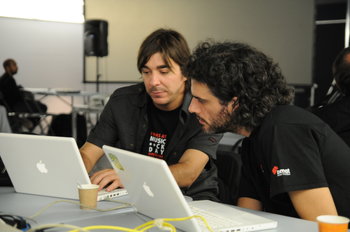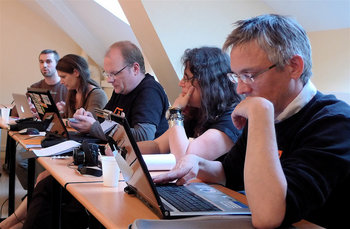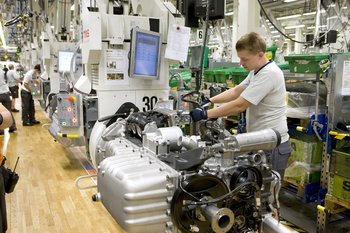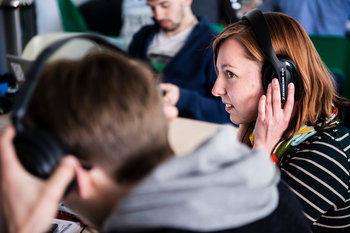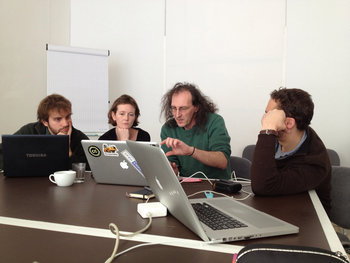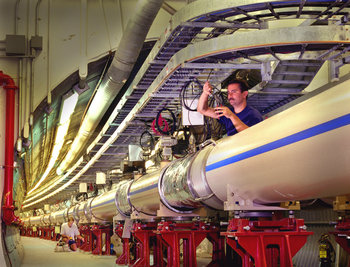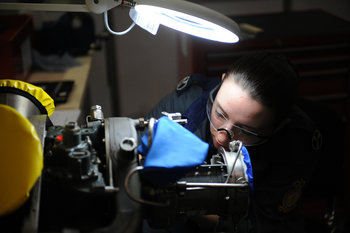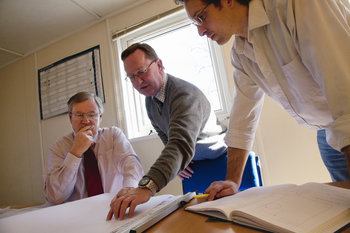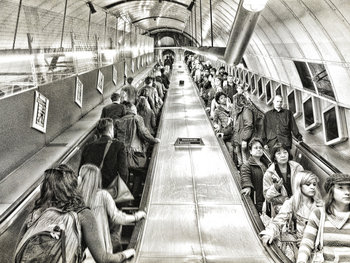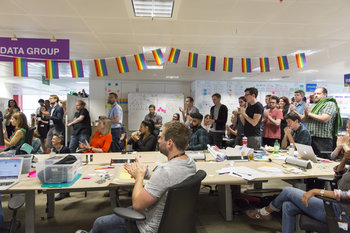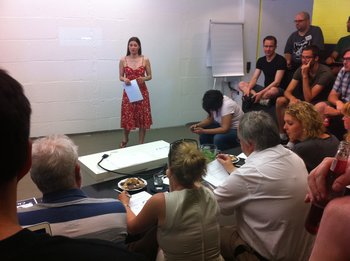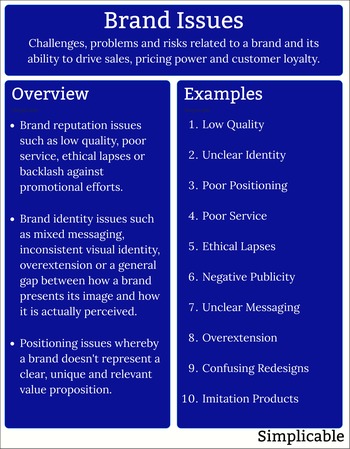
Accuracy
Precision is often compared to accuracy. Precision relates to the amount of useful detail provided by information. For example, the number 3.1415926535 is a more precise representation of PI than 3.14. Accuracy relates to whether information is correct and true. Information can be precise but fully incorrect. In other words, you can give lots of useful detail about something but still be totally wrong. Accuracy is about correctness. If you say, "the Sun is big" this is perhaps accurate but not very precise.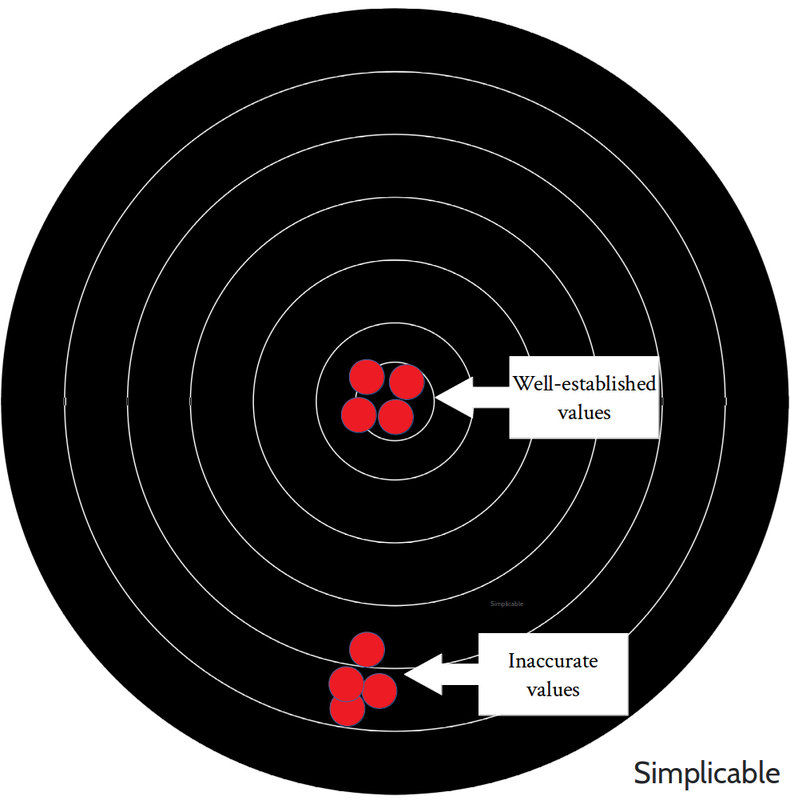
Measurement
Precision is the difference between a measurement and its true value. This can be estimated by taking multiple measurements of the same thing and calculating the standard deviation of the set. For example, the four measurements in the red experiment below are more precise than the four measurements of the yellow experiment.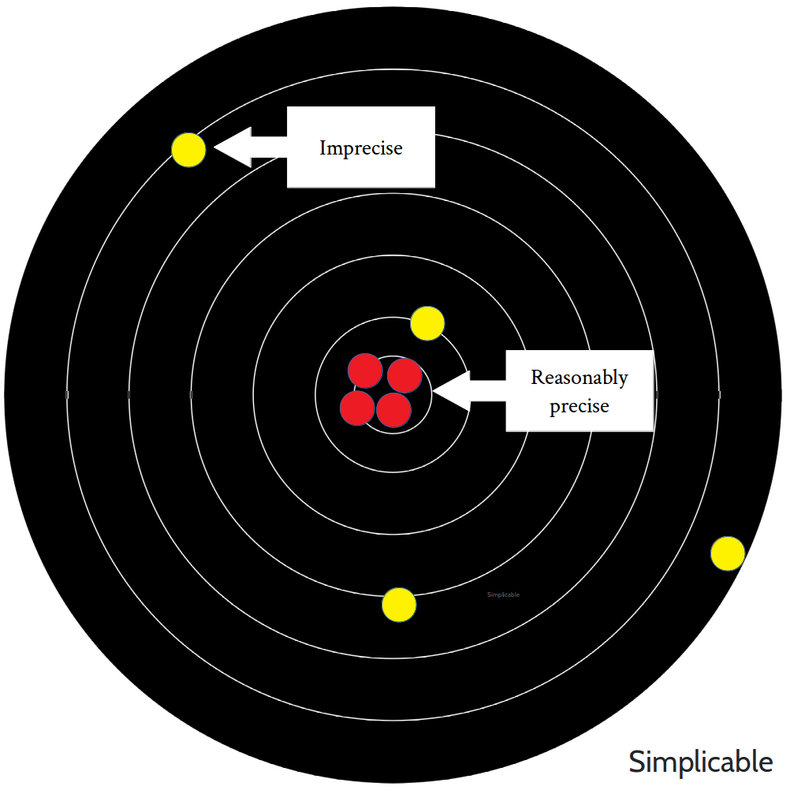
Sensitivity
Sensitivity is the number of true positives that are correctly identified by a test. For example, the number of people who are sick who are correctly identified by a blood test for a disease. Sensitivity is a type of precision.Specificity
Specificity is the number of true negatives that are correctly identified by a test. This is another type of precision. For example, the number of healthy people who are correctly identified as not having a disease by a particular test.Rounding
Rounding numbers reduces precision because a rounded number is likely to be further from the underlying true value. For example, 14.8763323989974 is more precise than the same number rounded to 14.9.Resolution
Resolution is the ability of a measurement to capture significant digits. For example, a scale that measures a banana as 0.335434634374232211 pounds as opposed to a scale that measures a banana as 0.34 pounds. This has the same effect as rounding as a low resolution tool or process produces measurements that are further from true values.Calculation
An imprecision in an input value can result in a proportional or larger imprecision in the output of a calculation. For example, a radar gun determines an object moved 100 meters in 4.4 seconds rounded down from the true value of 4.4499 seconds. This results in the following calculation of speed. 3600 / (4.4 × 10) = 81.818181 kmh or 50.839461 mph = 51 mphUsing the more precise true value of 4.4499:3600 / (4.4499 × 10) = 80.900694 kmh or 50.2693606836 = 50 mph As such, by rounding the input parameter the calculation becomes less precise.Language
Language is commonly imprecise. This is done to make information interesting, short and consumable. For example, you might say "Japan has experienced deflation for 20 years." This isn't at all precise as it doesn't mention what years or how much deflation occurred. However, it gets across a general point that is somewhat truthful. A more precise way of saying the same thing would be to state that Japan's consumer price index was a 100.8 in January 1994 and 100.7 in January 2014 indicating that over a period of 20 years prices had stayed more or less the same despite years of mild deflation mixed with years of mild inflation.Thought & Memory
Human thought processes and memory tend to deal with high level concepts and impressions as opposed to precise detail. This is one of the primary differences between man and machine. A digital photograph will capture visual information with some precision that remains relatively unchanged with the exception of wear and tear on the media where it is stored. People tend to have high level and conceptual memories of what they see that quickly fade with time and can be influenced by later emotions and information.Automation
Beyond information, precision can be used to describe the sameness of work outputs. For example, a robot drilling holes all day whereby each hole looks identical unless you use a high powered microscope to identify minor differences.Performance
Humans don't tend to be as precise as machines and commonly rely on machines to increase the precision of their work. In some cases, imprecision is valued because it is a sign of human artistic abilities. For example, a wabi-sabi aesthetic that is achieved by producing imperfect pottery by hand.Summary
The following is a basic overview of precision with additional examples.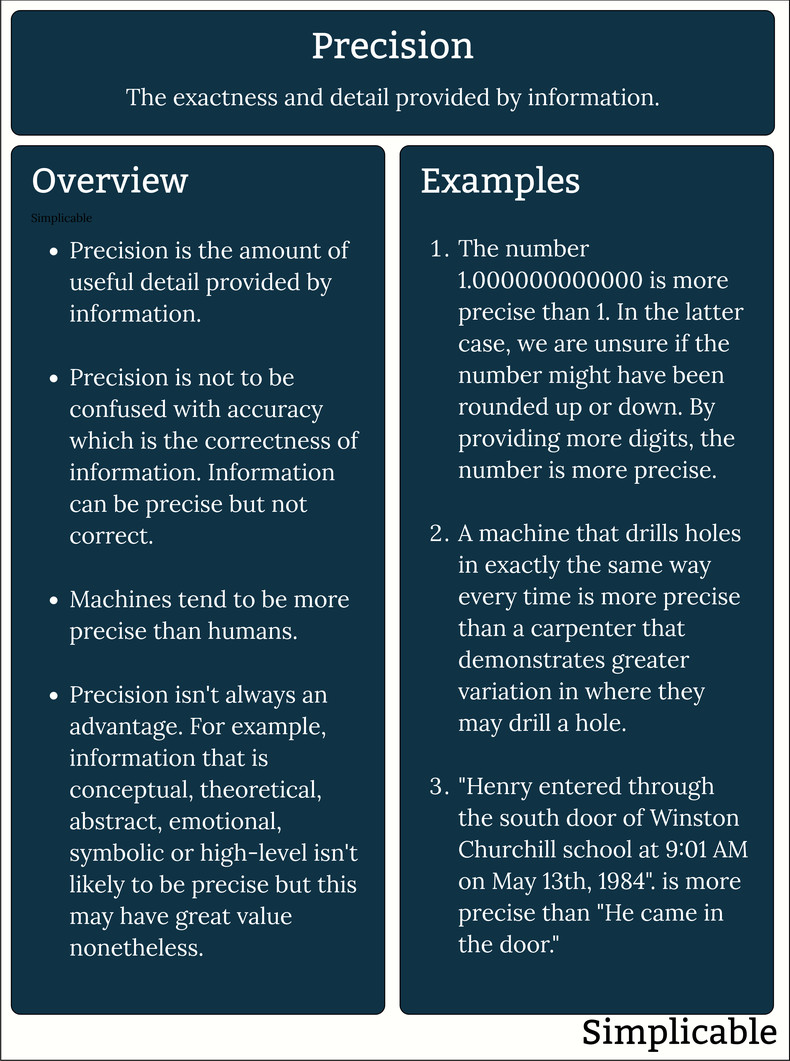
| Overview: Precision | ||
Type | ||
Definition (1) | The amount of useful detail provided by information. | |
Definition (2) | The closeness of agreement between multiple sources or representations of information. | |
Definition (3) | The sameness of work products. | |
Related Concepts | ||




